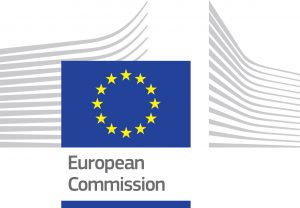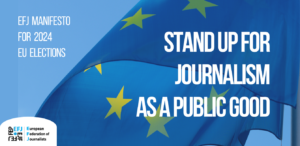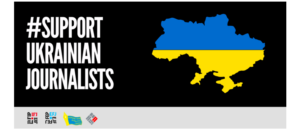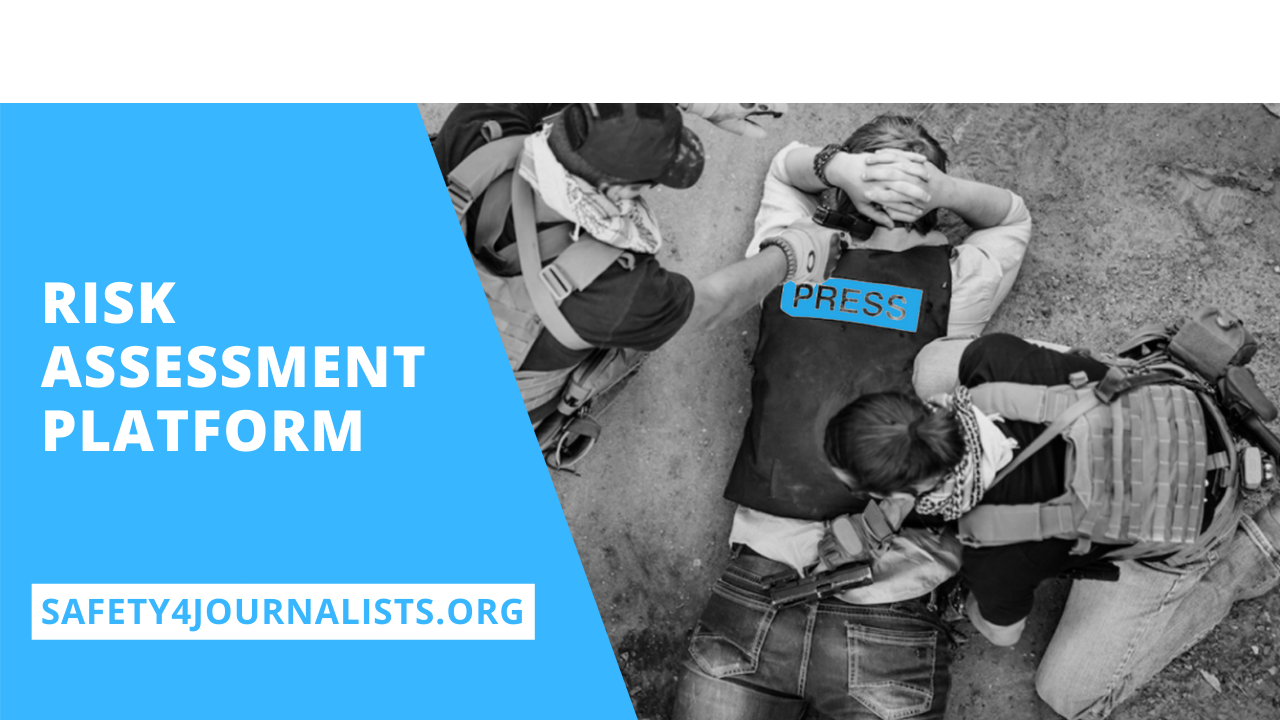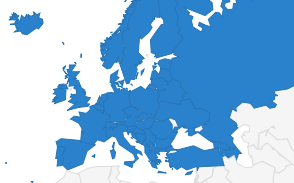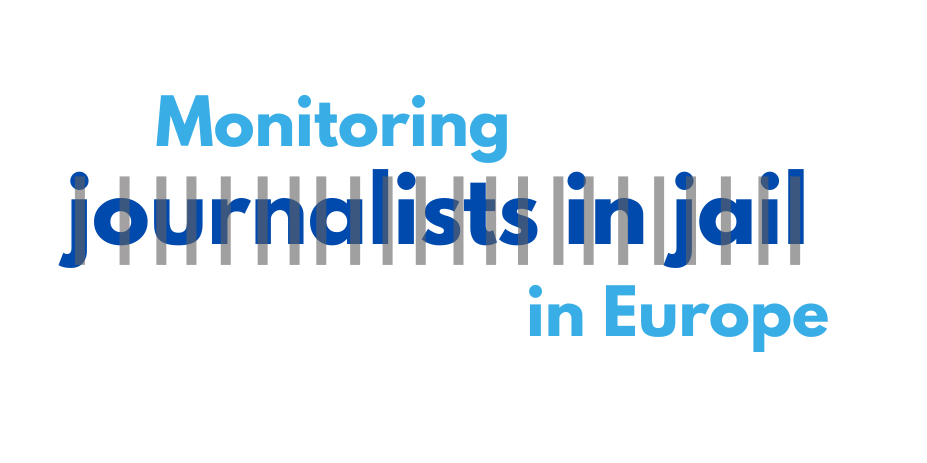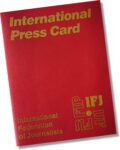How to build trust and engage audiences? Our takeaways from journalism experts

How can audience engagement and artificial intelligence help regain trust in quality journalism in an age of information overload and disinformation? This and further related questions were at the core of the Trust in media webinars taking place on 25 and 26 March. The European Federation of Journalists (EFJ) hosted two webinars as part of the Trust and quality in journalism project, which is co-funded by the European Commission. Here is a summary of the main themes and statements expressed during these webinars.
Spread over two days, eight distinguished speakers and two moderators shared their knowledge and research on how media outlets may change this alarming trend of globally decreasing trust levels. On the first day, after an introduction by Mogens Blicher Bjerregård, EFJ President, and Renate Schroeder, EFJ Director, Maja Sever, President of the Croatian Trade Union of Journalists moderated the panel. The speakers were Jonas Jungar, Head of Journalistic Standards and Ethics at YLE; Wiebke Loosen, Senior Researcher at the Leibniz Institute HBI; Shirish Kulkarni, Journalist and Researcher at Clwstwr; and Cédric Motte, Director of Digital Products and Editorial Development at Centre France Group. More information on all experts is found here.
“Trust is the currency to survive in journalism,” said Renate Schroeder at the very beginning of the webinars, which is why it is so essential to rebuild what has been lost in recent times. Journalism is meant to serve its audience and journalistic standards and ethics must be adhered to. Jonas Jungar, who acts as a YLE quality controller to live up to the audience’s expectations, expressed himself rather positively, from a Finnish perspective: “There is now a great demand for information and serious journalism. This is an opportunity,” he said. Jungar also said that trust is related to emotions and how readers feel, and not just about facts. Thus, “we should convey transparently how we work, according to which principles, to let the audience know we care about them.” Instead of holding on to the unachievable principle of objectivity in journalism, verification should be the guiding principle in producing trustworthy content.
Speaking of audiences, Wiebke Loosen emphasised that “there is no such thing as one audience, rather, audiences are constructed”. There are multiple audiences on different channels, which can be very complicated for journalists in their working routines. “But on a societal level, it makes sense to talk about the relationship between journalism and audiences,” Loosen concluded. Loosen understands herself as a relationship researcher, where the relationship she is studying is sometimes paradoxical as it is marked by communication problems and a lack of mutual understanding and appreciation. However, as audiences are constitutive for journalism, it is crucial to work on these problems and to consider the audiences’ needs more.
The idea to re-focus on citizens to work in the public interest was also elaborated on by the British journalist, Shirish Kulkarni, who underlined the need to provide orientation and information that helps people to understand what is going on and to base their decisions on. “Very little journalism actually helps us to orientate ourselves. We build trust by doing trustworthy things,” he stated. Further, Kulkarni believes in reflective journalism and in his job he works with communities to build journalism via a bottom-up-approach: “We should be asking ourselves: what are we better at than robots? And the answer is: deep, human connection and care.” Kulkarni shared their research which shows that people are longing for context and that the market is changing towards a demand for humane, diverse and inclusive stories.
Cédric Motte gave some examples of best practices, for instance, that the Centre France Group decided to cut the number of articles by about 40% which resulted in a growth in visits by 50%. “The focus should be on quality, rather than quantity,” Motte highlighted. News media should not focus so much on the number of visitors, but on the percentage of people reading until the end of an article. Centre France Group also organised workshops where people would physically meet together to find solutions to local problems. Apart from the recurring theme of transparency, the need to improve media literacy was also emphasied.
Regarding the question on how Journalists’ Unions and Associations can contribute to improving trust, Maja Sever said that the protection of workers’ rights strengthens freedom of speech, which ultimately benefits society and can thus help restore trust. The enhancement of media literacy, according to Jungar, lies in the responsibility of educators and schools, as media literacy should be part of school curricula from early on.
After deep-dive sessions with the four speakers, the first day ended with a motivational statement by Jonas Jungar, who said: “Journalists should also be proud of their craft, which requires a certain set of skills. We should be proud of our working methods and ways we treat information.”
On the second day, Yuk Lan Wong, EFJ Policy and Project Officer, moderated the panel focusing on how artificial intelligence and automation may converge with journalism in order to innovate newsrooms while adhering to ethical standards. Respectively, the speakers were Andreas Marckmann Andreassen, Digital Editor and Head of News at Journalisten; Alberto Rabbachin, Programme Officer at the European Commission; Jarno M. Koponen, Head of AI and Personalisation at YLE; and Stephen Fozard, Project Director at the Global Alliance for Media Innovation (GAMI) at WAN-IFRA.
#EFJTrustInMedia To the question: Automation – opportunity or threat? @amarckmann responds:“For it to be an opportunity, we have to prepare well. This is important for journalism, but also democracy. If we don’t adapt our competences to evolving technologies, we will be overrun.”
— EFJ (@EFJEUROPE) March 26, 2021
Based on his survival guide for automation, Andreas Marckmann Andreassen said that 64% of journalists are worried about their future career opportunities, while only 3% applied for automation courses. Yet, next to media literacy, data literacy is also extremely important in today’s media environment. “This does not mean journalists need to know how to code. But they should understand the basic technologies and publishers need to cooperate with tech companies,” Andreassen clarified. As part of such co-operations, tech companies need a strong understanding of editorial guidelines and ethical standards. Journalists, in return, should adapt their competencies via personalised training. Journalists’ Unions and Associations could help with such training, especially regarding freelancers, as gaps in competencies between big and small independent news organisations could broaden. Also freelancers will lose out as they will not be able to benefit from offers of training from their employers. Cross-border courses would be highly desirable to exchange knowledge.
Jarno M. Koponen explained how he has been building tools for democracy. For instance, Futureful, which breaks filter bubbles to widen people’s mindsets, or Voitto, a smart news assistant. As to attract younger people and for the purpose of media literacy, Koponen also introduced a media literacy game called Troll Factory, which helps to understand issues related to Social Media by learning how information operations work and fake news spread. Before building such tools, Koponen pointed out, one must think about how machines can truly serve journalistic purposes: “What are the tasks that machines can have the most impact in? Or when are people more suitable to build trust? You need to find the right balance.” He emphasised that AI and machines should help us do better journalism and not the vice versa.
Alberto Rabbachin added that the role of humans must remain relevant when building and using technologies as ultimately, artificial intelligence can only be ethical when coded as such. Rabbachin also referred to trustworthiness indicators for journalism that are being developed, where automation could play a role soon: “Here, the industry should agree on standards to build such indicators. Notably, this should not be implemented as a default setting, but an option for which consent is fundamental.” Rabbachin shared a number of initiatives and funding opportunities to support innovation in journalism and projects fighting against fake news, such as WeVerify.
Stephen Fozard demonstrated that innovation is going on in several media companies, media labs, research centres and innovation clusters. For instance, Fozard referred to projects such as Stars4Media, an open call for cross-border, innovative initiatives, and the AFP Media Lab.An extensive map of existing innovations and organisational structures is found here. However, Fozard noted that “it is also about knowing about them, connecting people among themselves, to be stronger together and to create a healthy ecosystem. People should use such opportunities!” Though there are several projects that support journalists who want to be innovative and work with AI, Rabbachin emphasised that more should be done to advance journalists’ skills to be fit for such opportunities in the first place.

As Mogens Blicher Bjerregård concluded: “These two days have reconfirmed the increasing importance of audience engagement, automation and trust for both journalism and civil society. To me, it has been a wake-up call that it is not only media literacy, but also data literacy which is crucial for journalism.” Cross-border cooperation among data scientists, designers and journalists will help to make the new developments an opportunity, rather than a threat.
A major question that arose from the webinars’ discussions is how to better integrate freelancers into the training sessions to adapt to technical changes. This will be at the centre of discussions at the upcoming webinars in June 2021 focusing on skills and training for journalists. More information will follow soon.
This activity is part of a two-year project “Trust in Journalism” launched by the EFJ and is co-funded by the European Commission (DG EMPL).
